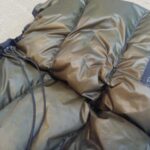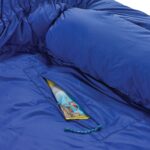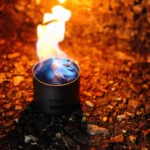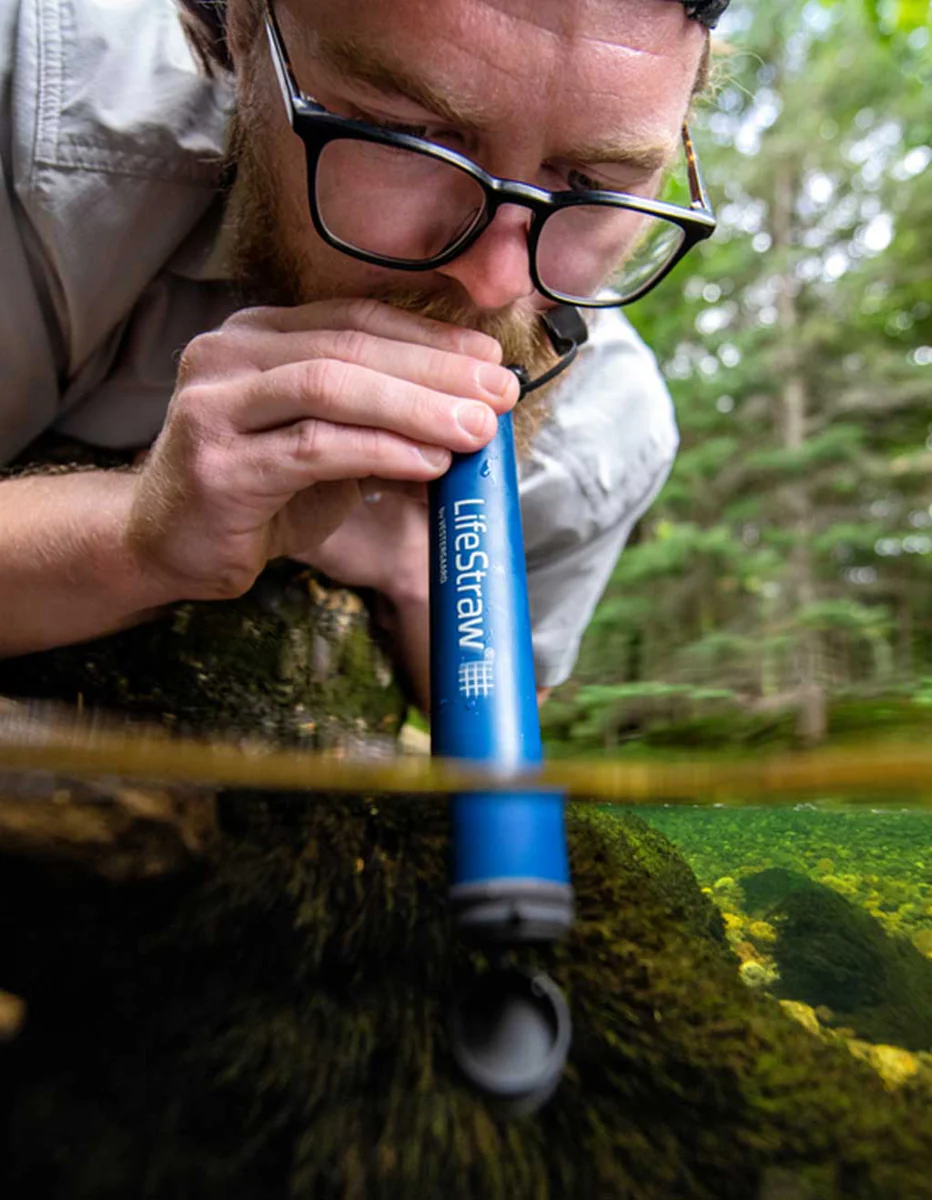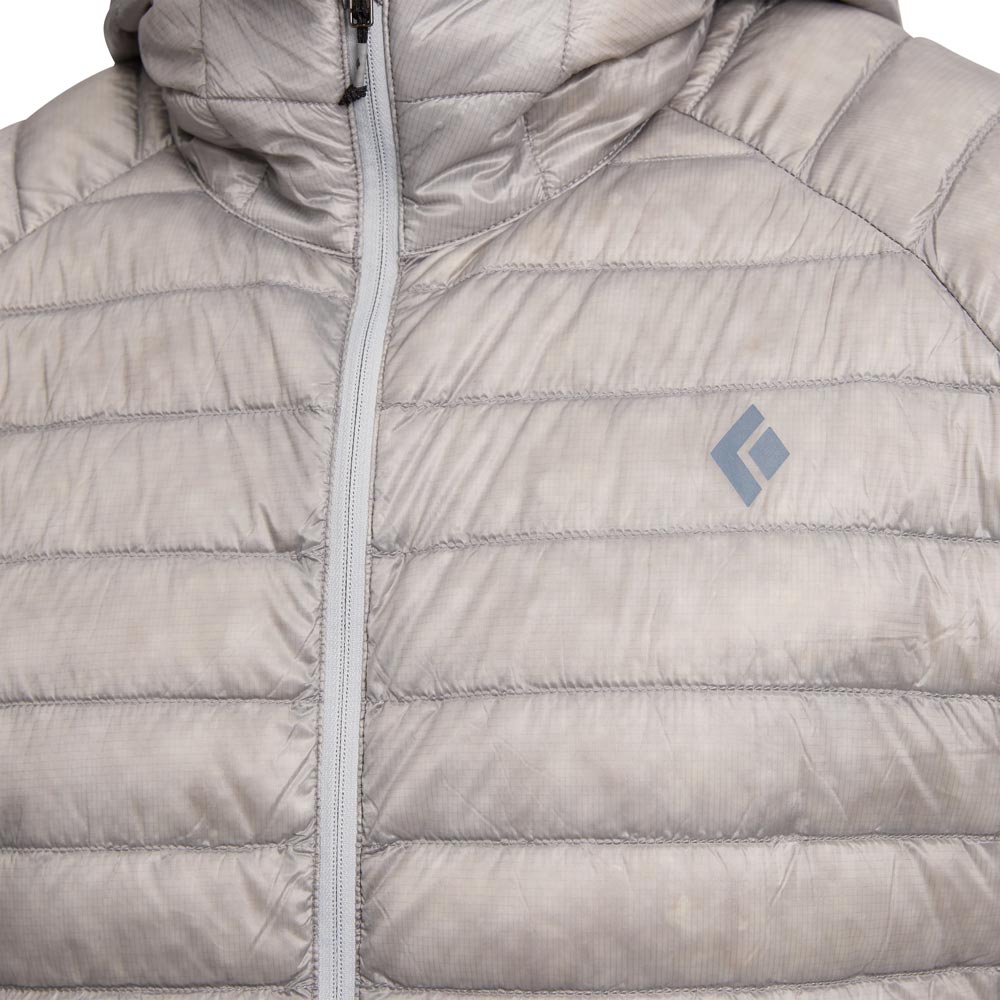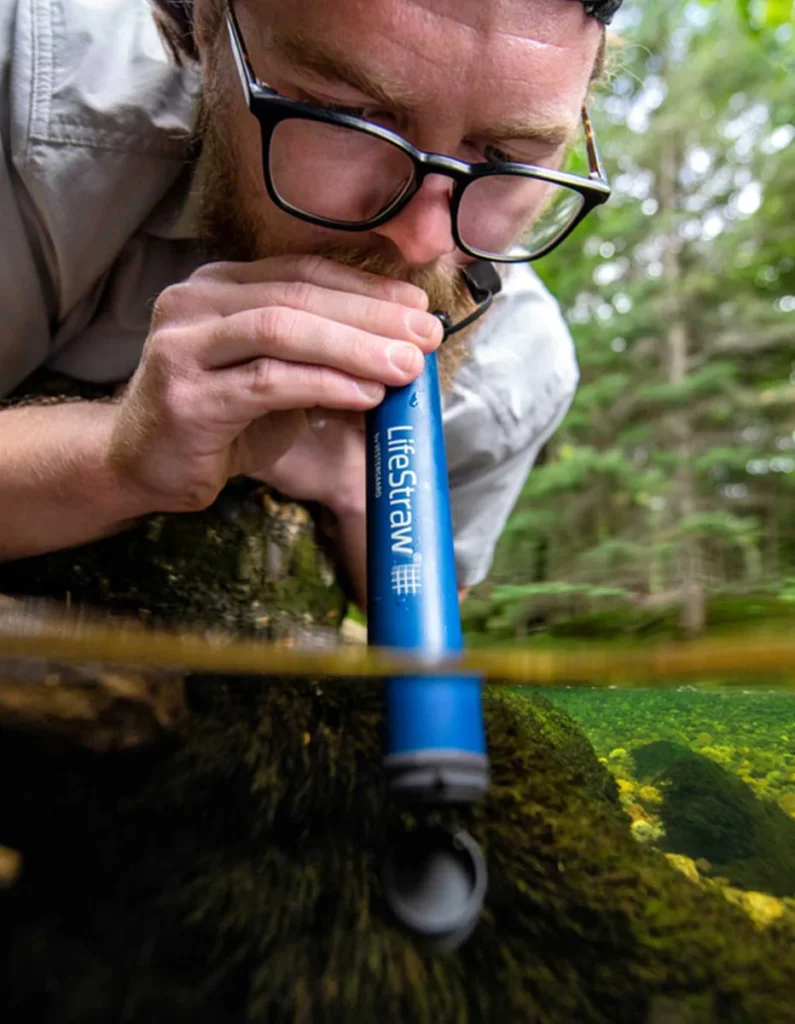
The LifeStraw Personal Water Filter is a compact, straw-style water purifier designed for hikers, campers, travellers, and emergency preppers. Weighing just 57 grams and requiring no batteries or chemicals, it’s become a staple in survival kits and ultralight packs worldwide.
In this review, we evaluate the LifeStraw’s filtration performance, ease of use, durability, and long-term value, with a focus on outdoor and minimalist use cases like bikepacking, wild camping, and bug-out scenarios.
Key Specifications
| Feature | Detail |
|---|---|
| Weight | 57 g (2 oz) |
| Dimensions | 22.5 × 2.5 cm |
| Filter Type | Hollow fiber membrane |
| Pore Size | 0.2 microns |
| Filtration Capacity | Up to 4,000 L (1,000 gallons) |
| Removes | 99.999999% bacteria, 99.999% parasites, microplastics, dirt, sand |
| Does Not Remove | Viruses, heavy metals, chemicals |
| Flow Rate | ~1.7 L/min (varies with suction) |
| Shelf Life | 5 years (unused) |
| Certifications | BPA-free, independently tested |
Design and Build Quality
Simple, Durable, and Field-Ready
The LifeStraw’s design is minimalist: a long, cylindrical tube with a mouthpiece at one end and an intake at the other. It’s made from BPA-free plastic and features a hollow fiber membrane inside that traps contaminants as you sip.
- No moving parts means fewer failure points
- Rugged casing resists drops and abrasion
- Integrated cap protects the mouthpiece from dirt
- Neck lanyard included for easy carry or attachment
It’s not flashy, but it’s built to survive rough handling and harsh environments.
Filtration Performance
What It Removes—and What It Doesn’t
The LifeStraw filters out:
- Bacteria (e.g. E. coli, Salmonella)
- Protozoa (e.g. Giardia, Cryptosporidium)
- Microplastics, sand, and sediment
However, it does not remove viruses, heavy metals (like lead), or chemical contaminants (like pesticides). For those, you’ll need a more advanced purifier or a carbon-based system.
Best used in clear, flowing water sources like streams, rivers, and lakes—not stagnant or polluted water.
Ease of Use
Sip and Go Simplicity
Using the LifeStraw is as intuitive as it gets:
- Place the intake end in water
- Sip through the mouthpiece
- Blow back to clear after use
There’s no pumping, no waiting, and no setup. However, the initial suction can be stiff, especially when the filter is new or the water is cold. Once primed, flow improves significantly.
- No batteries or chemicals required
- No backflushing tools needed—just blow air to clear
- No water storage—you drink directly from the source
Portability and Packability
Ultralight and Pocket-Sized
At just 57 grams, the LifeStraw is one of the lightest water filters on the market. It fits easily into:
- Bikepacking frame bags or saddle rolls
- Side pockets of hiking packs
- Emergency kits or glove compartments
It’s ideal as a backup filter, a minimalist primary option, or a just-in-case tool for day hikes and travel.
Durability and Maintenance
Built to Last (Within Limits)
The LifeStraw is rated to filter up to 4,000 litres—enough for one person’s drinking needs for over a year. However:
- Clogs can occur if used in silty or muddy water
- No replaceable filter—once it clogs, it’s done
- No way to clean the internal membrane beyond back-blowing
That said, with proper use and storage, it’s a low-maintenance, long-lasting solution for most outdoor needs.
Use Cases: Who Is It For?
Ideal For:
- Ultralight hikers and bikepackers
- Emergency preparedness kits
- International travellers (with clean water sources)
- Minimalist campers and bushcrafters
Not Ideal For:
- Group use (one person at a time only)
- Cooking or water storage (no container)
- Highly contaminated water (no virus or chemical removal)
Pros and Cons
Pros
- Extremely lightweight and compact
- No moving parts or batteries
- Affordable and widely available
- Long filter life (up to 4,000 L)
- Simple to use and clean
- Great for emergency kits and solo use
Cons
- No virus or chemical filtration
- No water storage or gravity feed
- Requires suction—can be tiring
- Not suitable for turbid or stagnant water
- Cannot be cleaned internally if clogged
Comparison: LifeStraw vs Sawyer Mini vs Katadyn BeFree
| Feature | LifeStraw Personal | Sawyer Mini | Katadyn BeFree |
|---|---|---|---|
| Weight | 57 g | 57 g | 63 g |
| Filter Life | 4,000 L | 378,000 L (claimed) | 1,000 L |
| Removes Viruses | No | No | No |
| Flow Rate | Moderate (suction) | Slower (gravity/squeeze) | Fast (squeeze) |
| Water Storage | No | Optional pouch | 0.6L soft flask |
| Best For | Emergency, backup | Versatile, long-term | Fast fill on the go |
Final Verdict: Is the LifeStraw Personal Water Filter Worth It?
If you’re looking for a lightweight, affordable, and dead-simple water filter, the LifeStraw Personal Water Filter is a solid choice. It’s not the most versatile or powerful option, but it excels in portability, ease of use, and reliability—especially for solo adventurers, emergency kits, and minimalist setups.
For campers, hikers, and bikepackers who want a no-fuss backup filter that works when you need it most, the LifeStraw is a modern classic that still holds its own in 2025.




